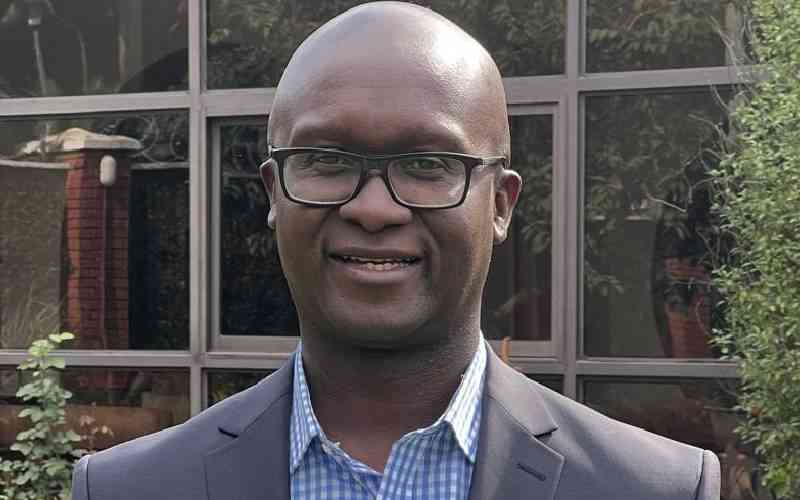When faced with vast social challenges, bold action on big ideas often achieves more than a hesitant, considered approach. Consider the different outcomes in the way the Government implemented the Free Primary Education programme in 2003 and the resettlement of internally displaced people several years later. While both ran into unique difficulties, it is clear that the lack of a bold plan in the latter instance led to unique challenges.
Had there been a big, co-ordinated push to acquire land, resettle groups, rebuild homes and the like early on, some of the political and practical problems now being addressed would not be an issue.
Similarly, had thinking on the handling of the Aids pandemic focused on one simple idea early on, the challenges facing the nation today would be different.
How is it that billions of shillings meant to buy HIV and Aids medicines for Kenyans is lying unspent as people continue to be claimed by the disease? The answer to this question lies in a history of timid health interventions.
Years of spending money largely on a myriad of small-time prevention programmes saw a disparity between the amount of money coming in and the amount being spent.
There was also failure to keep track of the spending, leading to instances of poor accounting and corruption that served to slow down the arrival of more funding into the pipeline. When a big idea was finally agreed upon — free anti-retrovirals for all those infected — the funds to execute it in a big way were not always there.
Kenya’s needs are great and the available funding can go a long way to addressing them.
Once the challenges that have impeded access to this funding are removed, it behooves those in the health ministries to ensure they put the money to use in a few bold plans that are easy to monitor, rather than lose it in the morass of red tape that has impeded health provision.
We must not let bureaucracy, political squabbling, corruption or ineptitude hold us back.
Kenya has been promised $500 million (Sh42 billion) in funds from the United States President’s Emergency Plan for Aids Relief (Pepfar). The country faces a huge funding gap for treatment and prevention following a drop in pledges from other sources. This puts the target of a million people on ARVs by 2015 in jeopardy. Only a third of the estimated 1.5 million people living with HIV are on ARVs.
Treatment coverage is lower for children, currently standing at only 34 per cent. Yet by leaving these people off these medicines, we create new problems for future generations that have to deal with more deaths and the cost of opportunistic diseases.
The $1.5 billion pledged to Kenya has been sitting unused too long. To put it in perspective, this is roughly three times the annual amount the US Government spent on Aids globally a decade ago.
US officials call it a ‘bad pipeline’ and are threatening to remove unspent funds from country ledgers and, instead, identify specific programmes to fund. Kenya cannot afford this loss. Rather than plan to keep growth of ARVs enrolment at the same level as previous years, which would lead to the loss of some of this money, now is the time for a more aggressive approach.
It will not be possible to ramp up to 500,000 people on ARVs by 2013 as demanded by Aids activists with just 100,000 new initiations. An increase to, say, 150,000 or 175,000 a year, while quite feasible, will speed the scale-up sufficiently to, as CDC Kenya puts it, “break the back of the epidemic”.
This is the kind of bold thinking that we expect of the health ministries as they prepare for their meetings with Pepfar officials in the coming weeks.
Stay informed. Subscribe to our newsletter
Coming in the wake of earlier revelations of funds from the Global Fund for Aids, Tuberculosis and Malaria sitting unnoticed in an account for months due to bureaucratic blundering at the health ministries, the discovery of a ballooning Sh42 billion at Pepfar is not surprising. This should, however, not be the case.
 The Standard Group Plc is a
multi-media organization with investments in media platforms spanning newspaper
print operations, television, radio broadcasting, digital and online services. The
Standard Group is recognized as a leading multi-media house in Kenya with a key
influence in matters of national and international interest.
The Standard Group Plc is a
multi-media organization with investments in media platforms spanning newspaper
print operations, television, radio broadcasting, digital and online services. The
Standard Group is recognized as a leading multi-media house in Kenya with a key
influence in matters of national and international interest.
 The Standard Group Plc is a
multi-media organization with investments in media platforms spanning newspaper
print operations, television, radio broadcasting, digital and online services. The
Standard Group is recognized as a leading multi-media house in Kenya with a key
influence in matters of national and international interest.
The Standard Group Plc is a
multi-media organization with investments in media platforms spanning newspaper
print operations, television, radio broadcasting, digital and online services. The
Standard Group is recognized as a leading multi-media house in Kenya with a key
influence in matters of national and international interest.








